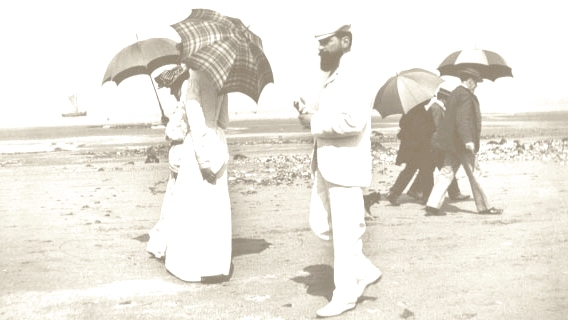The sense of superiority which naturally arises when one group takes control of another's destiny is no new phenomenon. It runs through the history of mankind and this is why this writer considers the Melungeon movement to be so important at this juncture in history as a force resistant to racist rhetoric so that persons who acknowledge the contribution of their multi-ethnic ancestors reflected in their own lives powerfully disprove charges of intellectual inferiority which the bigoted would like to see as inherent in any one people.
On one hand, the South Carolina courts were in essence saying that a mixed race person with property and known association with whites could be deemed white with all the attendant privileges of that status but, on the other hand, a slave, no matter how far he was removed from his African ancestry, could have no such aspirations. In Barbados, the principle was the same, though strongly denied. The closeness that obtained between Barbados and the Carolinas and Virginia in particular with so many persons of the pioneer companies having proceeded from Barbados makes this phenomenon very understandable as the genesis for the need for isolation and the imparting of extreme prejudice to subsequent generations which, in Barbados, gave birth to a visibly white community yet known as Red, their original status.
The Calendar of State Papers for 1657 gives the unique description of the labour policies on Barbados in which the Irish "were derided by the negroes as white slaves" and records that negroes were being employed at trades rather than the the English, Scotch and Irish. Two years before the official report it was recorded that the import of Irish people as labour was being resisted by the English because the Irish were wont to throw in their lot with the escaped slaves yet the written record on Barbados is that the Irish never intermarried with the escapees they joined forces with.
Forbes came to the conclusion that many of the removed Native Americans were engaged in fishing activities. Early Barbados history confirms that the captured natives were being used as fishermen as well as house servants and coincidentally, pockets of white communities with a non-European culture were springing up being termed Red-Legs or Poor Backras marrying among themselves. Early photographs of Red-Legs show a marked resemblance to some of Kennedy's portraits of Native American and Melungeon families.
On Barbados, the Red-Leg community centered on the hilly, isolated areas of Irish Town and the Scotland District which has led historians to believe that they were an unmixed remnant of Scotch-Irish. The eating habits formerly ascribed to them of eating lice, crickets and bonavist, a type of bean, however indicates more than Irish origins. Impoverished through lack of opportunity these communities were referred to as "abandoned people".
Barbados and the Melungeons of Appalachia
L.E. Salazar
The Melungeons.com



